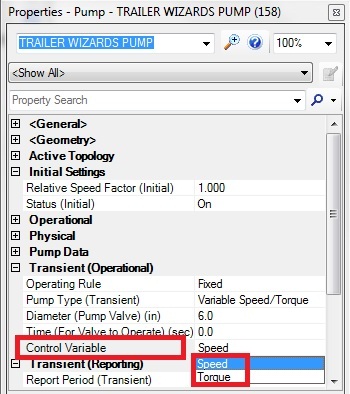
| |
|
|
|
| |
Applies To |
|
|
| |
|
|
|
| |
Product(s): |
Bentley HAMMER |
|
| |
Version(s): |
08.11.XX.XX |
|
| |
Environment: |
N/A |
|
| |
Area: |
Layout and Data Input |
|
| |
Subarea: |
|
|
| |
Original Author: |
Terry Foster, Bentley Technical Support Group |
|
| |
|
|
|
When I run a pump shut down using the pump shut down after time delay transient pump type, the residual flow through the pump(s) is different from when the pump shutdown is simulated using the variable speed/torque pump type.
What is the difference between these two types of pump shut down methods?
Background
The difference between the pump "Shut down after time delay" and the "Variable speed/torque" pump type options are the shut down after time delay assumes that the electrical torque applied to the pump impeller remains constant, then suddenly drops to zero, whereas with the variable speed type, you directly enter the pattern of pump impeller speed (by default) so you are directly controlling the speed of that impeller. With the shut down after time delay, the impeller will take some time to spin down once power is cut, based on the inertia/momentum. (the inertia value is entered in the transient tab of the pump definition)
Steps to Accomplish
- If you wanted to have the variable speed/torque pump type act like the shut down after time delay pump type (cutting off the power instead of having to manually control how the speed changes), then you could set it to use "Torque" as the control variable instead of "Speed" (this is the default). This is done in the pump properties.

2. If you want to use the variable speed type (instead of variable torque), you would first need to decide how long it takes for the pump impeller to slow to a stop after it shuts down. If you need help in doing this you could do a trial run using the "Shut after time delay" transient pump type with a number in the "Report Period" field. After computing the transient simulation look at the bottom of the transient analysis details report to see the pump speed over time.
3. Next you will need to define an operating rule (Components > Patterns) based on that delay and when you want the pump to restart. You'll need to decide how long it takes for the pump to turn back on as well. In the pattern, 1.0 represents full speed and 0.0 represents fully stopped. Model the pump as being on in the initial conditions, set the transient pump type to variable speed, and select the pattern that you created.